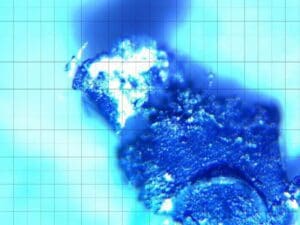What is FW and Iron on my sample report? Why don’t they always correlate?
The two results seen on most used oil analysis reports may not correlate as it is in fact two separate measurements. The reason for capturing both these measurements is down to the interpretation of the analysis, the small ppm measurements of Iron allow us to monitor the differing severities of wear while the FW reading allows us to notice when abnormal wear is occurring or just when someone has took a dodgy sample!
How do we test FW and Iron?
The FW instrument uses a magnetic field which calculates the change of permeability when the sample is introduced and outputs a value of FW.
The Iron ppm content is measured by spectroscopy, we utilise the ICP. Inductively Coupled Plasma which works by exciting the sample and measuring the movement of atoms within the sample to provide a concentration of 23 different elements.
Image 1:

Image 2:

Who would benefit from Ferrous Wear Analysis?
All industries with ferrous components within their assets. Anyone who needs to understand the causation of the wear to be able proactively resolve and prevent the issue happening again.
When do we perform Wear Debris Analysis?
We will carry out this type of analysis on their own initiative if uncharacteristic results are seen for a particular asset.
How our testing works:
Using the test methods explained above, along with optical analysis, our amazing analysts will be able to provide you a story of your lubricant and assets relationship and journey.


